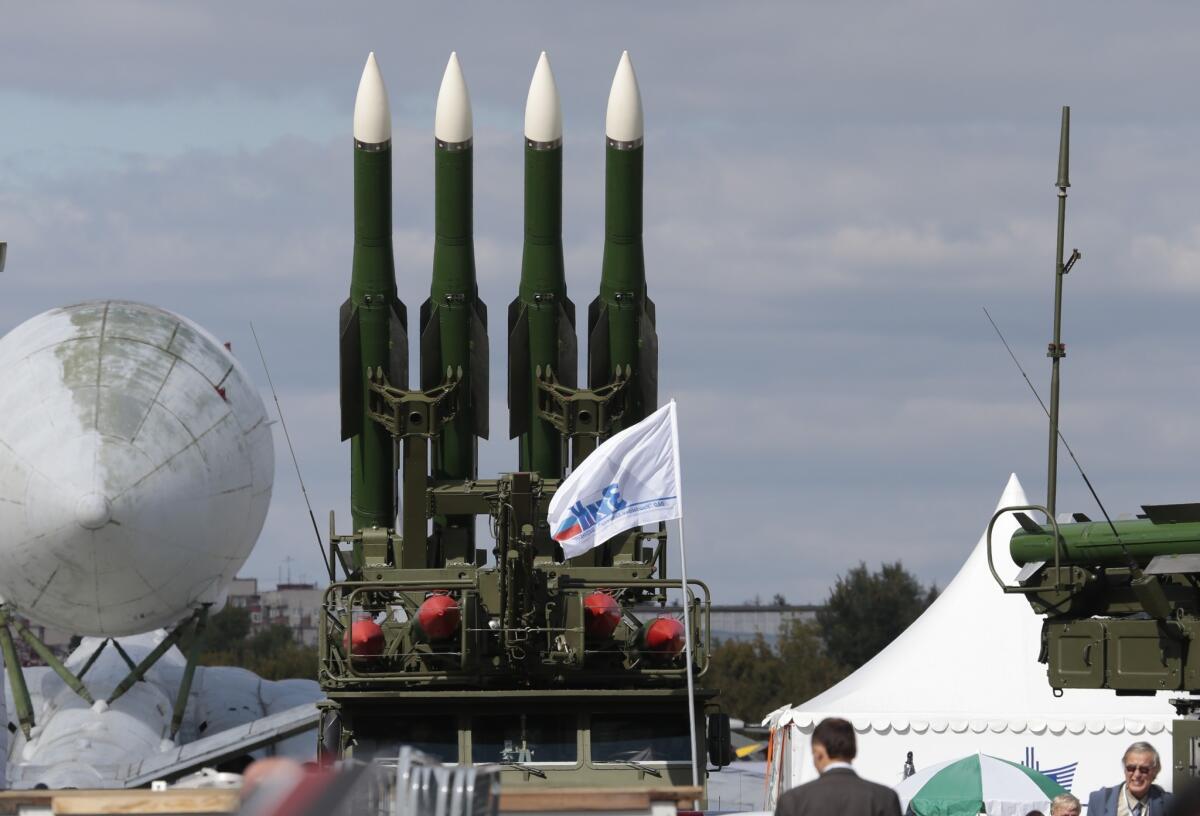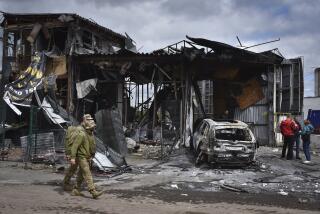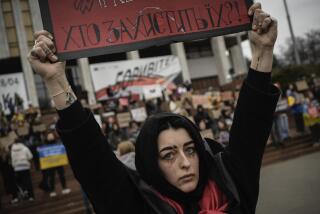Experts: Whoever brought down Malaysian jet had extensive training

- Share via
Reporting from Washington — Whoever fired the surface-to-air missile that brought down a passenger jet over eastern Ukraine would have needed extensive training to execute the mission, according to military experts.
Taking down Malaysia Airlines Flight 17, traveling about 600 mph at an altitude of 33,000 feet, required vastly more expertise than, say, firing a shoulder-braced rocket-propelled grenade at a slow-moving helicopter. A crew of at least four would have been needed to accurately fire the truck-mounted Russian-made SA-11 missile, also known as a Buk missile system.
“You’ve got to have people who are technically competent,” said retired Army Maj. Gen. Stephen V. Reeves, who served as an intelligence officer in Western Europe.
The SA-11 is a 1972-era weapon system, and is not as technologically advanced or easy to operate as more modern weaponry.
“This is a hard system to use, in today’s terms,” said retired Army Lt. Gen. Patrick J. O’Reilly, a former director of the U.S. Missile Defense Agency, who estimated that each of the SA-11 crew members would have needed at least six months of training.
“You don’t just take some folks off the street, and 30 days later they’re trained,” he said.
The SA-11 system is designed to identify a target with radar before and throughout the flight of the missile. The radar data is transmitted continuously to the missile, guiding it toward the target.
However, O’Reilly said that while the SA-11 can find and follow targets at altitudes up to 70,000 feet, the system is unable to distinguish between a military transport plane and a large passenger aircraft.
Given the Malaysian jetliner’s altitude and cruising speed, O’Reilly said, the SA-11 probably was fired within 25 miles of the crash site.
Those who fired at the Malaysian jetliner Thursday “knew they were shooting a large aircraft,” O’Reilly said. “It’s such an old technology, it could very conceivably be they thought they were shooting down a military cargo plane or a large tanker. It is not unlikely they really thought that they were shooting down a military aircraft.”
The SA-11 missile is an explosive warhead armed with a “proximity fuse” that detonates within 110 yards of a target. This means, O’Reilly said, that Flight 17 was downed by the force of the blast, not by a direct collision with the missile.
“It’s not designed to hit the plane,” he said. “It’s designed to get close, and the proximity fuse automatically goes off.”
Debris from the wreckage, particularly chunks of the jetliner, probably will contain tell-tale fragments of the SA-11. However, the forensic work of verifying the type of weapon would still fall short of identifying who fired it because of the SA-11’s ubiquity in the region, both O’Reilly and Reeves said.
Senior U.S. officials have said the missile appears to have been fired from an area of eastern Ukraine held by Russia-backed separatists, some of whom were spotted with an SA-11 launcher shortly before the missile was fired.
O’Reilly and Reeves noted that both the Russian and Ukrainian armies possess SA-11s. They also said it was possible that the Russia-aligned militants possess them. The crash occurred in an area of eastern Ukraine held by the separatists.
“That’s the [missile] system that you pick to do the very thing that it did,” O’Reilly said. “So that there’s some deniability. Both the Ukrainians have it and the Russian army has it.”
It’s possible, Reeves said, that specialized Russian military personnel—”Spetsnaz”—were directly or indirectly involved with the crew that fired the missile.
“Whoever did this wasn’t someone that had a little bit of training and some Russian advisors told him how to do it. These people were trained on it — for a long time. The fact is, they shot one [missile] and they hit. They’re pretty proficient, O’Reilly said.
“If it wasn’t Russians or Russian advisors, it had to be former Russian air-defense personnel. Someone had to be formally trained in order to use it.’’
Twitter: @DwillmanNews
More to Read
Sign up for Essential California
The most important California stories and recommendations in your inbox every morning.
You may occasionally receive promotional content from the Los Angeles Times.











